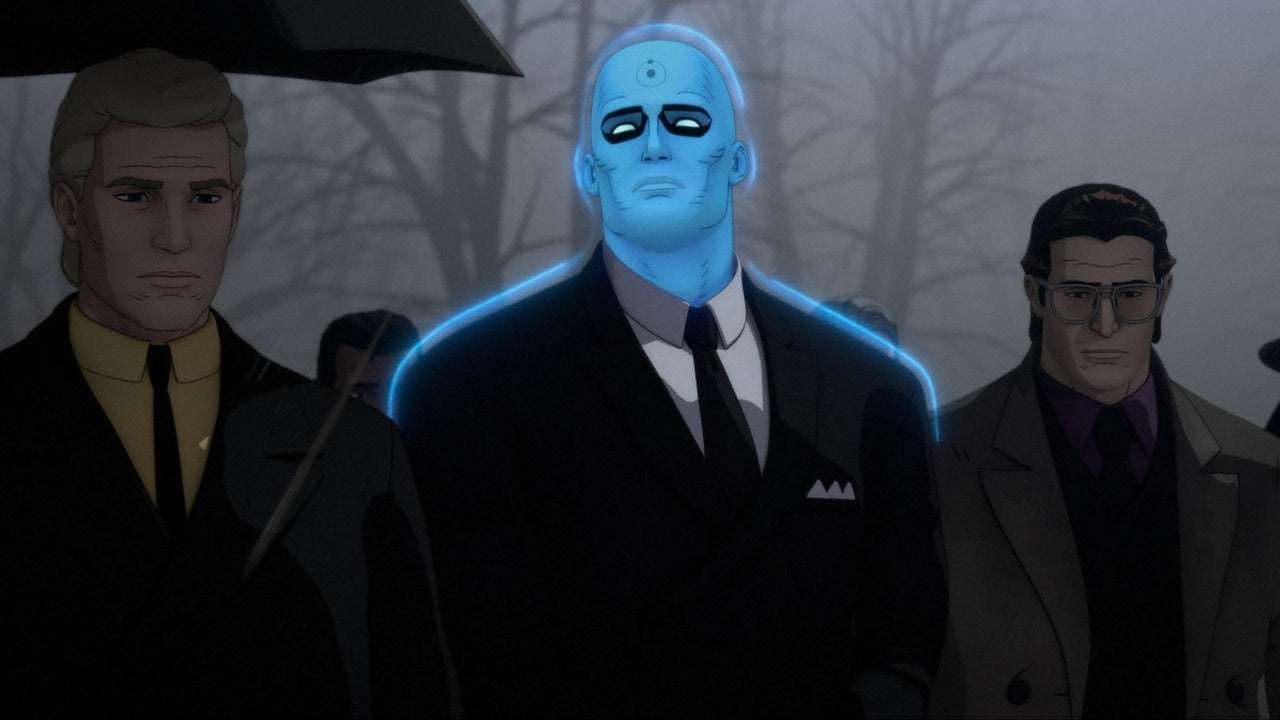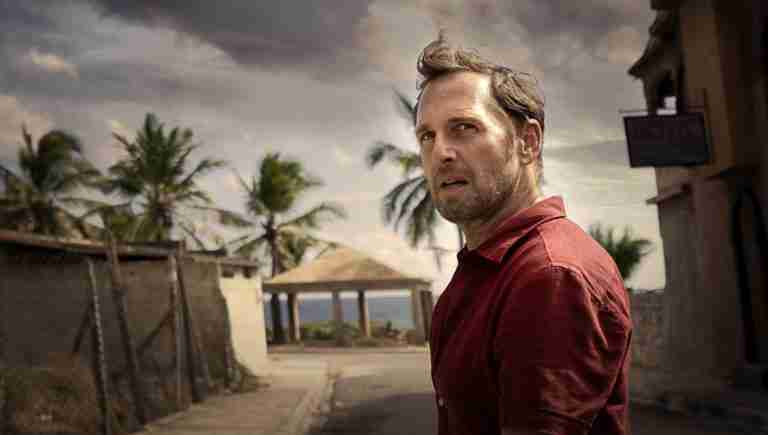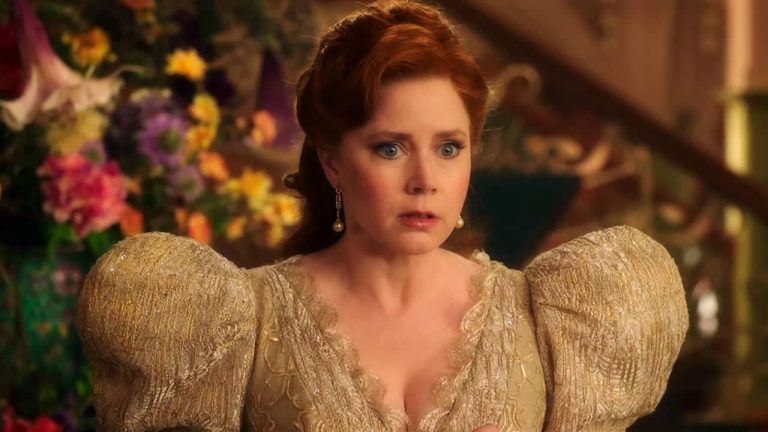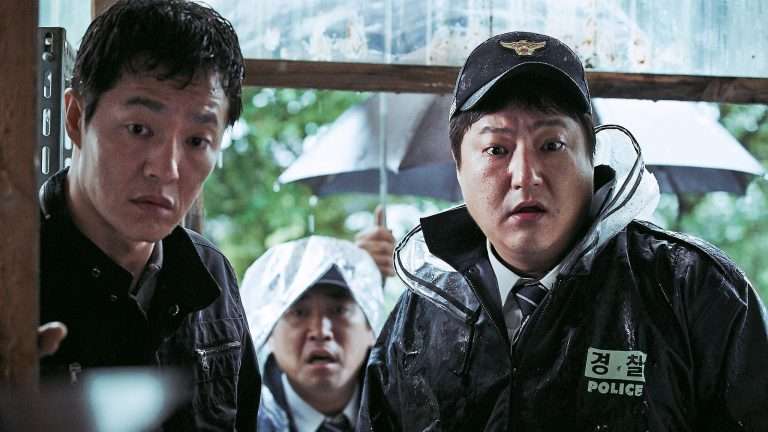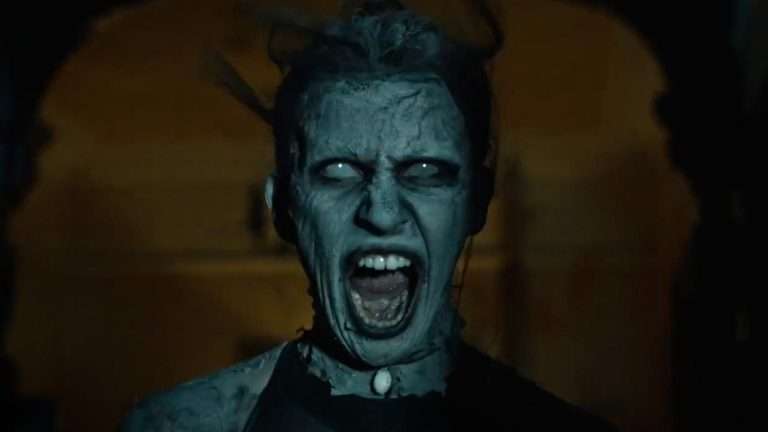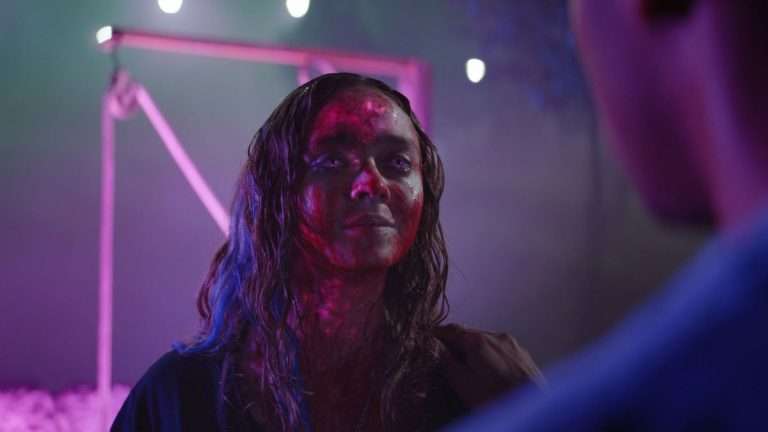The 55th installment of the DC Universe Original Animated Films and the first of a two-parter, “Watchmen: Chapter 1,” is the direct adaptation of the first six issues of the seminal graphic novel Watchmen, written by Alan Moore, drawn by Dave Gibbons, and colored by John Higgins. The animated film is directed by Brandon Vietti (Batman: Under the Red Hood) and adapted by J. Michael Straczynski (showrunner of Babylon 5).
Watchmen: Chapter 1 (2024) Plot Summary and Movie Synopsis:
Setting
Considering that this is a faithful adaptation of the graphic novel, the setting of the movie remains the same as well. An alternate reality was the United States of America in the 1980s, where the presence of costumed vigilantes or superheroes would begin to produce a point of divergence in 1938. The most significant divergence to have occurred in the Vietnam War, which resulted in a victory for the American forces in 1971 due to the presence of Doctor Manhattan. This also led to Richard Nixon continuing his presidential term by the time the story began in October 1985.
The Cold War tensions between Russia and the United States have reached a fever pitch, with the two countries on the brink of war. Meanwhile, the Keene Act was passed in 1977, outlawing all masked crimefighters and vigilantes except for the Comedian (Edward Blake) and Doctor Manhattan (Jon Osterman), who both work for the US government.
Most of the major events in the first six issues of the graphic novel are faithfully adapted, albeit streamlined, for this adaptation.
What does Rohrshach discover while investigating Edward Blake’s death?
On October 12th, 1985, two detectives investigate the apparent burglary and homicide of one Edward Blake, who appears to be thrown out of the window of his high-rise apartment. Realizing from the pictures around the house that Blake might have been a big shot, the two detectives decide not to investigate the matter too deeply on the off chance that masked vigilantes might interfere, especially Rohrashach, who hasn’t yet retired.
That night, Rohrasahch discreetly climbs up the walls of the high-rise and enters through the broken window of Blake’s apartment to investigate. He soon learns a fact unbeknownst to everyone in the superhero or vigilante community by discovering his costume and smiley-face badge: Edward Blake is The Comedian, the government-sanctioned superhero who had been active pre-” Keene Act” and had also been involved in averting the Vietnam War, turning the tides in the Americans’ favor. The death of such a figure springs forth a conspiracy in Rohrshach’s aggressive mindset—that someone is hunting down superheroes.
Which of his comrades does Rohrshach decide to visit?
He decides to warn a couple of his retired comrades: shy and introverted inventor Dan Drieberg (Matthew Rhys), who had once been Nite Owl, the second and Rohrashach’s crime-fighting partner during the “golden age.” Drieberg is also close with Hollis Mason, the original Nite Owl, who is now retired and content to speak about stories of the old days. Drieberg doesn’t entirely believe Rohrsach’s claims, but Rohrsach doesn’t bother to explain too much, instead choosing to warn the most powerful man in America, Doctor Manhattan.
Doctor Manhattan, formerly Jon Osterman, an atomic physicist and son of a watchmaker, is exposed to a freak laboratory accident and believed to be eviscerated until he re-enervates himself into a blue humanoid being. Coined by the US government as Doctor Manhattan, Osterman would display an invulnerability that was all but godly. He has the power to look forward and backward in time, but more importantly, he is unable to affect time in any way. That leads to his ethos of everything remaining pre-determined. He would primarily focus his efforts on research, leading to a massive jump in vehicles powered by alternative energy sources.
Osterman would be one of the few crime-fighters invited to join the new crime-busters team, led by Captain Metropolis and consisting of his Minutemen alumnus, The Comedian. It also consisted of second-generation adventurers like Nite Owl, Rorschach, Silk Spectre II (Laurie Juspeczyk, or Laurie Jupiter), and Adrian Veidt, or Ozymandias, the self-proclaimed smartest human being. The Crime Busters would be a short-lived team because the Comedian’s cynicism about the world is going down the drain, and masked superheroes are unable to solve it. That could also be attributed to Manhattan’s presence, which only exacerbated the animosity between the Soviet Union and the United States.
Back in the present day, Rohrshach tries to voice out his conspiracy of someone hunting superheroes but is derided by Silk Spectre when he tries to point out that he ignored the moral lapses of a character like Comedian while investigating one of the country’s great patriots. That triggers Laurie, leading to Manhattan banishing Rohrshach by teleporting him from the Rockefeller Research Center, where Laurie and Jon reside. Laurie’s relationship is frayed with The Comedian because Blake tried to rape his mother, Sally Jupiter, when they were team-mates on the original superhero team, The Minutemen. Blake would be beaten savagely by the Hooded Justice.
In the present, Rohrshach would visit the most intelligent man on the planet, Adrian Veidt, who is now a billionaire with his own company, having cashed in on his superhero persona. Veidt would postulate that Blake’s death might have been political, but Rohrshach still stands by his conspiracy theory.
Why does Doctor Manhattan leave Earth?
Meanwhile, Laurie starts to feel neglected by Jon and finds comfort in a friendship with Dan Dreiberg, sharing stories of olden times and even finding herself strangely excited at fighting a couple of goons with Dan. Meanwhile, Dan, Jon, and Adrian Veidt would attend the funeral of Edward Blake. Jon would sense the presence of Moloch, one of the Comedian’s closest enemies, who had come to the funeral.
At a live television event, where Manhattan would provide his first television interview after ages, Manhattan would be accused of having inadvertently caused cancer to his colleagues, Wally Weaver and his former lover Jenny Slater, who would break up with him when he started an affair with Laurie in 1966. In 1985, Manhattan’s dissociation from humanity led him to try to multitask his research along with lovemaking with Laurie by duplicating himself, which weirds Laurie out, causing her to walk out of the house.
The further accusation by the populace of Earth as being radioactive alienates Manhattan further, leading him to teleport to Mars and build a castle of his own. The self-imposed exile of Manhattan couldn’t have come at a worse time because the Russian forces had begun invading Afghanistan and were slowly inching towards an invasion of the United States.
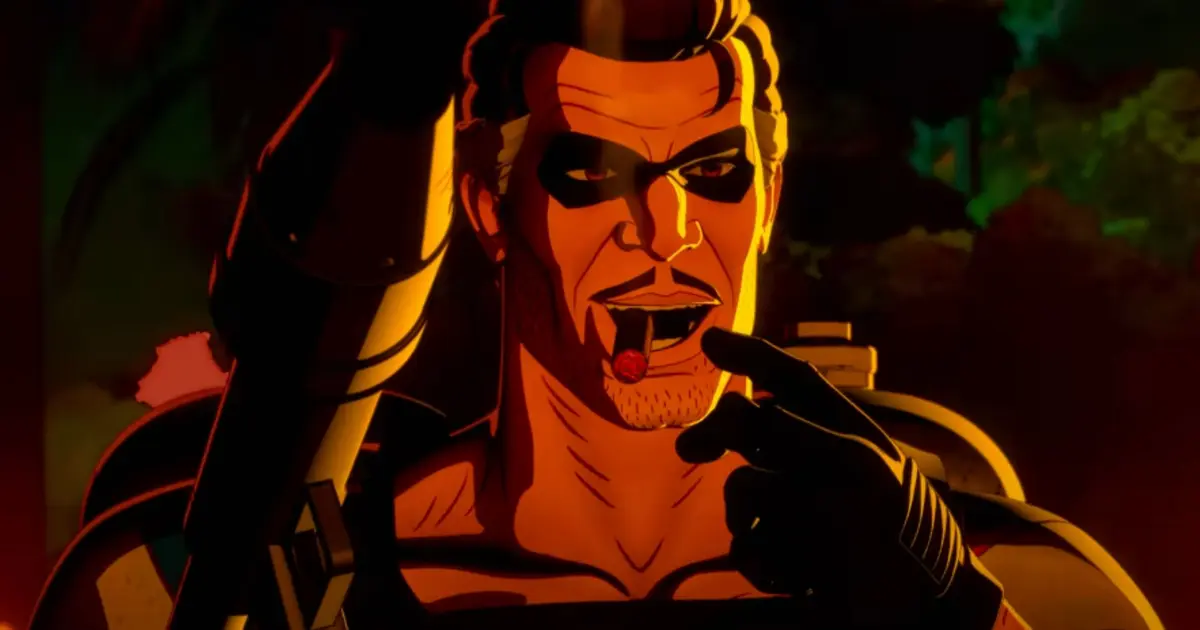
Watchmen: Chapter 1 (2024) Movie Ending Explained:
What is Rohrshach arrested for?
Like the graphic novel, the film also uses the comic book within the Universe, Tales from the Black Freighter, as a meta-commentary on the graphic novel in the original and for the film. In the Watchmen universe, due to the presence of superheroes being happenstance, pulp comics and later comic book publishers would focus on pirate stories as the dominant form of storytelling in the comic book medium and intercutting back and forth between a key moment where the protagonist of the comic hunts for a shark. The movie depicts Ozymandias in the middle of an assassination attempt at his office, where he manages to overpower the assassin in his lobby but is unable to stop him from killing himself by biting on a cyanide pill.
Meanwhile, Rohrshach would visit Moloch for interrogation for the second time. The first time Moloch would talk about the time when Comedian visited him in the dead of night, he had a mental breakdown, muttering about the names of Moloch and Jenny Slater and how the “big blue freak” would react if someone looked at him funny. Surprisingly, Blake would also find himself remorseful and scared, acknowledging that while he had been complicit in bad things that were incomparable to what was about to happen. It is a big, bad joke, but as Blake asks while shaking a confused Moloch, why was he not laughing? A few days later, Blake would be murdered. Rorschach would remember the list being mentioned in Moloch’s testimonial.
This second meeting finds Rohrashach walking into Moloch’s room, only to find him killed by a sniper bullet shot through the head. As the police surround the house, he realizes it’s a trap and he has been framed. He tries to escape by knocking out and killing a couple of the officers but is ultimately caught while trying to jump out through the window. The cops restrain him and pull his mask (Rohrshach’s face according to his screams) to reveal the red-haired homeless man walking around with a signboard titled “The End is Nigh,” who had been seen throughout the film at intermittent points. His name is revealed to be Walter Kovacs, as he is arrested for the murder of Moloch.
Watchmen: Chapter 1 (2024) Movie Review:
The inevitable question to ask when any iteration or adaptation of Watchmen hits the shelves or screens is an empathetic, loud “WHY?”. The question is not without merit. The seminal graphic novel by writer Alan Moore and artist Dave Gibbons is rightly called one of the greatest graphic novels ever made and possibly one of the foremost texts about superhumans, superpowers, and sequential art as literature. It is more than an alternate history text and exercise by Moore, whereby he cleverly skewers all the concepts of superheroes by introducing pathos and psychological profiles behind the masks rather than archetypal attributes. Watchmen has been inevitable as a foundation text because of its medium. It works essentially as a comic book, and within panels, panel layouts, or even panel structures, it adapts, comments on, and even evolves the comic book writing process.
This complicated legacy of “Watchmen” doesn’t exactly translate as material for adaptation, especially for the big screen. But that’s not to say DC Comics did not try. The first adaptation ever of Watchmen would turn out to be 2009’s big-screen spectacle, and a suitably divisive one considering the filmmaker involved. Zack Snyder’s adaptation would be mostly faithful (if one accounts for the Ultimate Cut, adding the Tales of the Black Freighter comic within a comic included as an animated short film, even more so). But it has Snyder’s flourishes, visual tics, and an ending vastly different from the graphic novel. Thus, it becomes a divisive endeavor, but the current discourse around the film is more supportive than most.
But this iteration of Watchmen goes back to the same old tired well of adapting the graphic novel again, only this time in animated form and with the same amount of care that had been approached by DC Animation in some of their seminal films, Under the Red Hood and The Dark Knight Returns. Under the able hand of director Brandon Vieti and adapted by veteran comic book writer and television writer J. Michael Straczynski, this two-parter’s first installment adapts the graphic novel’s first six issues.
Utilizing a cel-shaded animation style, the animation could prove to be divisive, especially considering the fidelity of the graphic novel in terms of Gibbons’ colors. But perhaps Gibbons’ presence as a consulting producer pays off in dividends because the animation doesn’t feel cheap, and the movement of the characters is much smoother than in the Tomorrowverse animated movies. More importantly, the colors are brighter, with a decidedly yellowish hue, foregoing the original’s red and primary color visual palette, but it works in this instance.
What also works is streamlining the graphic novel for a television adaptation. It takes most of the significant events of the first six issues and lets the story breathe. The decision to pitch this as a two-parter works in its favor, and honestly, if DC intends this two-part animated film as the gateway to the graphic novel, this isn’t a bad start. For a newcomer unfamiliar with the graphic novel, or at most Snyder’s film, the movie can feel strangely disconnected due to the virtue of this being a two-parter. However, what stands out here are those final moments. The animated sequence showing Osterman’s origin story and integrating it as a series of echoes blurring into each other feels strangely potent, especially considering Manhattan himself is a stranger to his powers of being outside time and unable to change it, leading to his disconnect from humanity.
Similarly, I liked how the “Tales of the Black Freighter” comic book is integrated here, cutting back and forth between the pirate trying to hunt the shark and Ozymandias managing to overpower the gunman attacking him, or, in some cases, the word balloons mirroring the emotional dilemma faced by the characters. It feels like a balancing act that could be executed only by someone adept at handling both mediums, though I wouldn’t have minded if he had excised these elements entirely. But considering that he has included them, I like how they are integrated without compromising on the pacing (the Under the Hood appendix and the interview segments with Jenny Slater and Sally Jupiter have been shuttled off to the credits sequence, flitting between radio stations).
The flaws, though, are primarily two major ones. Firstly, while boasting of a very deep bench, the voice cast takes some pretty hard-to-adapt swings. Welliver voicing Rohrasach with a very gravelly yet fast-paced voice is certainly a take, which sometimes feels almost tonally off. Similarly, Cerveris’ iteration of Manhattan takes getting used to. Whatever the criticisms afforded to Snyder (valid or otherwise), there is no denying that his central casting has been indelible, with some actors leaving more of a mark than others.
Rick D. Wasserman’s voice performance as Edward Blake/The Comedian feels too blase – unfairly, I might add – because of Jeffrey Dean Morgan’s highly energetic and charismatic performance in the live-action film. And, of course, Troy Baker, as Adrian Veidt/Ozymandias, doesn’t have much to do precisely because the meat of his role is in the inevitable second chapter. Matthew Rhys as Dan Dreiberg is quite good, but Katee Sackhoff as Laurie Juspecyzk is a marked improvement. Sackhoff indeed manages to highlight the vulnerability in Laurie’s character.
The second flaw is the quintessential flaw faced by any Watchmen adaptation or iteration—the justification of its existence. My begrudging surprise at the quality aside, my loyalty still lies with the graphic novel. While as an adaptation, it is a labor of love, it would never be able to shed the mark of being an unnecessary adaptation. But as an example of how to faithfully adapt a graphic novel that had long held the reputation of being unfilmable or unadaptable, Watchmen: Chapter 1 so far brings a strong counter-argument against that statement, some dodgy voice acting aside. If the second installment can stick to the landing and not change the ending drastically as Snyder’s adaptation does, this might have a chance of being termed one of the better DC adaptations of the last ten years.
Read More: Where to Watch ‘Watchmen: Chapter 1’?
Watchmen: Chapter 1 (2024) Movie Trailer
Watchmen: Chapter 1 (2024) Movie Links: IMDb, Rotten Tomatoes, Letterboxd
Cast: Matthew Rhys, Katee Sackhoff, Titus Welliver, Troy Baker, Adrienne Barbeau, Corey Burton
Watchmen: Chapter 1 (2024) Movie Release Date: August 13th, 2024 | Genre: Drama/Action/Animation | Runtime: 1h 23m

